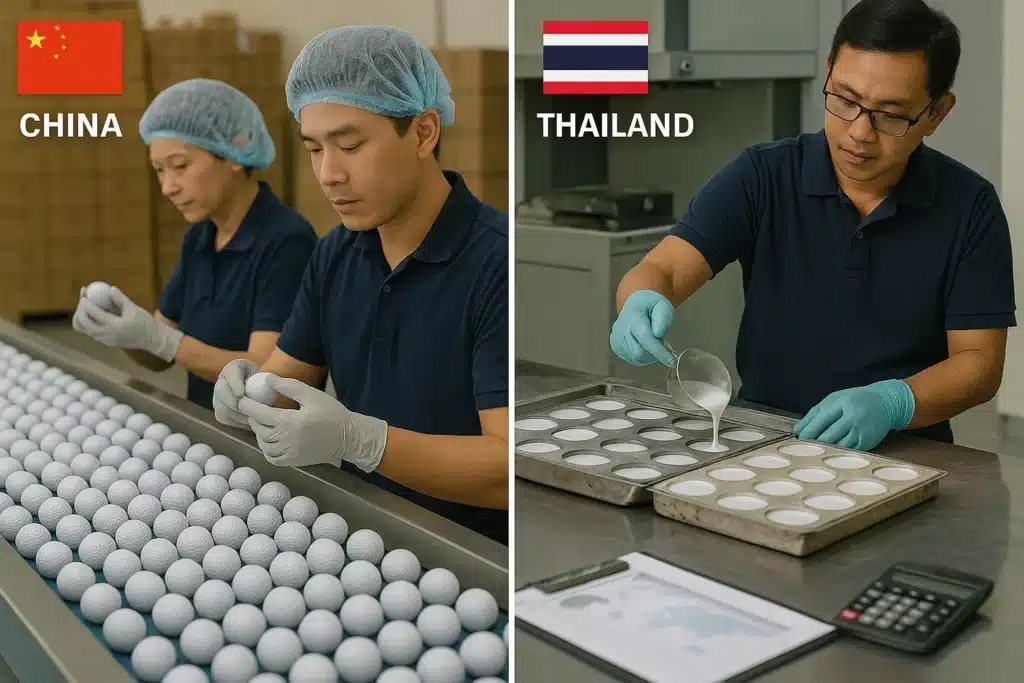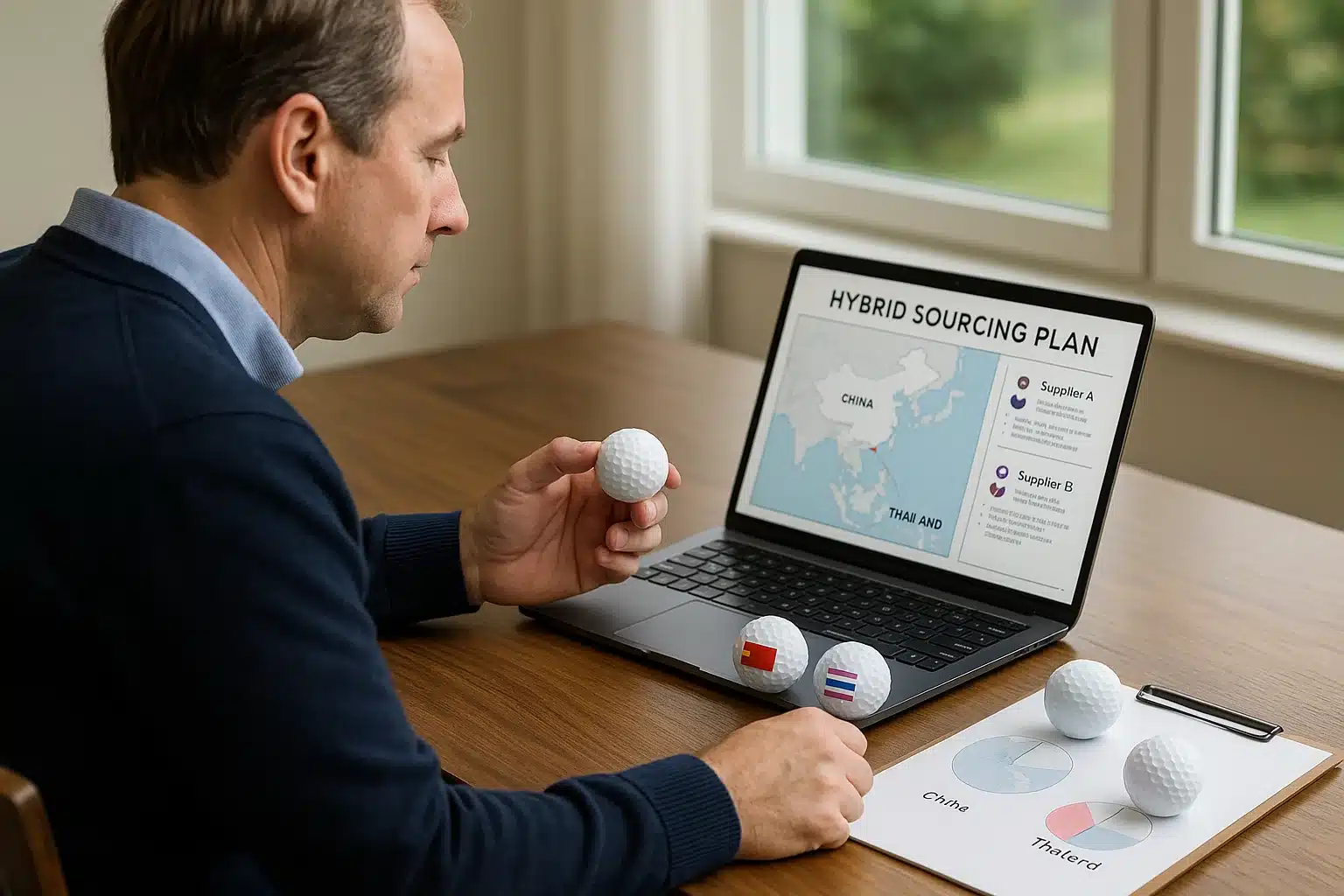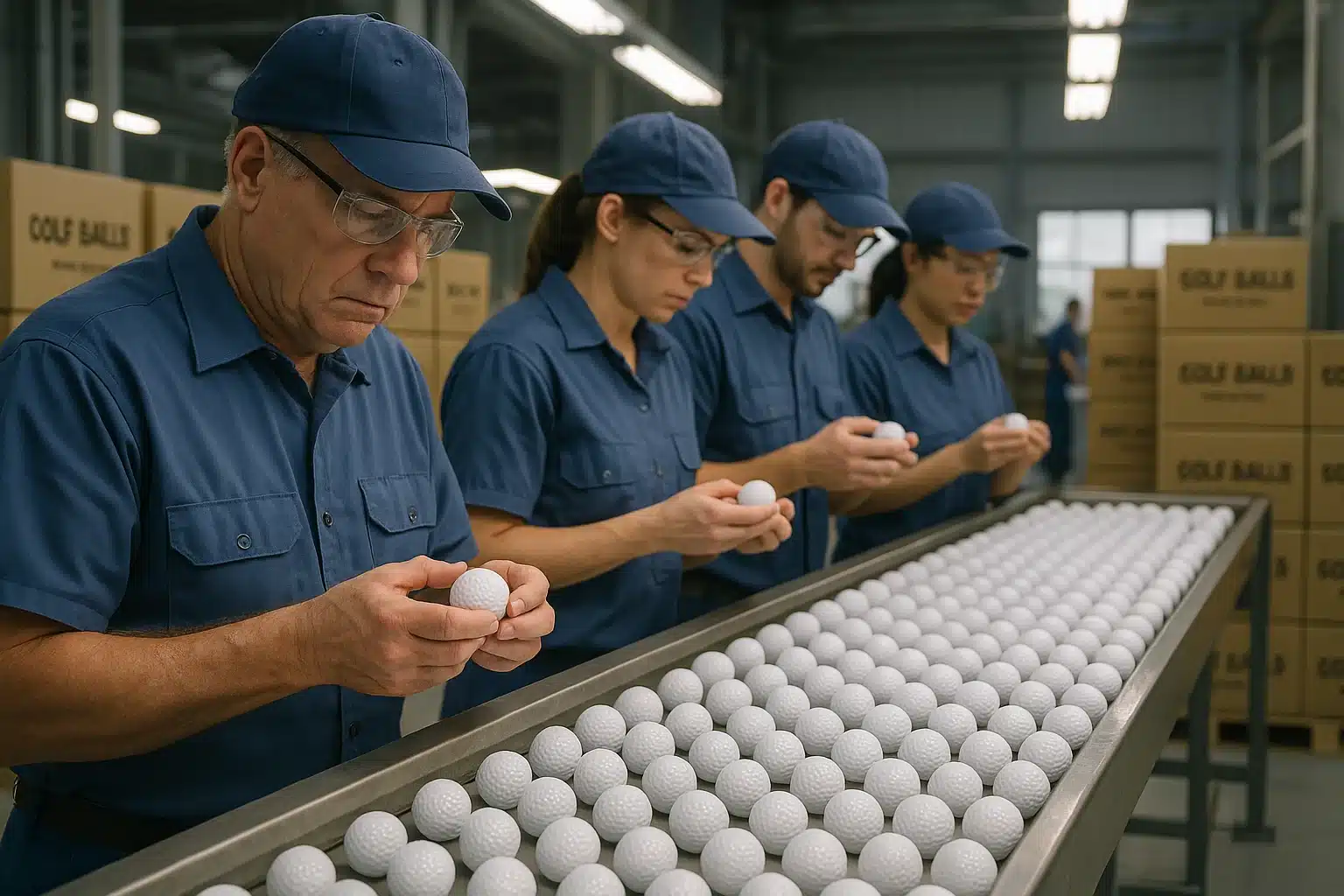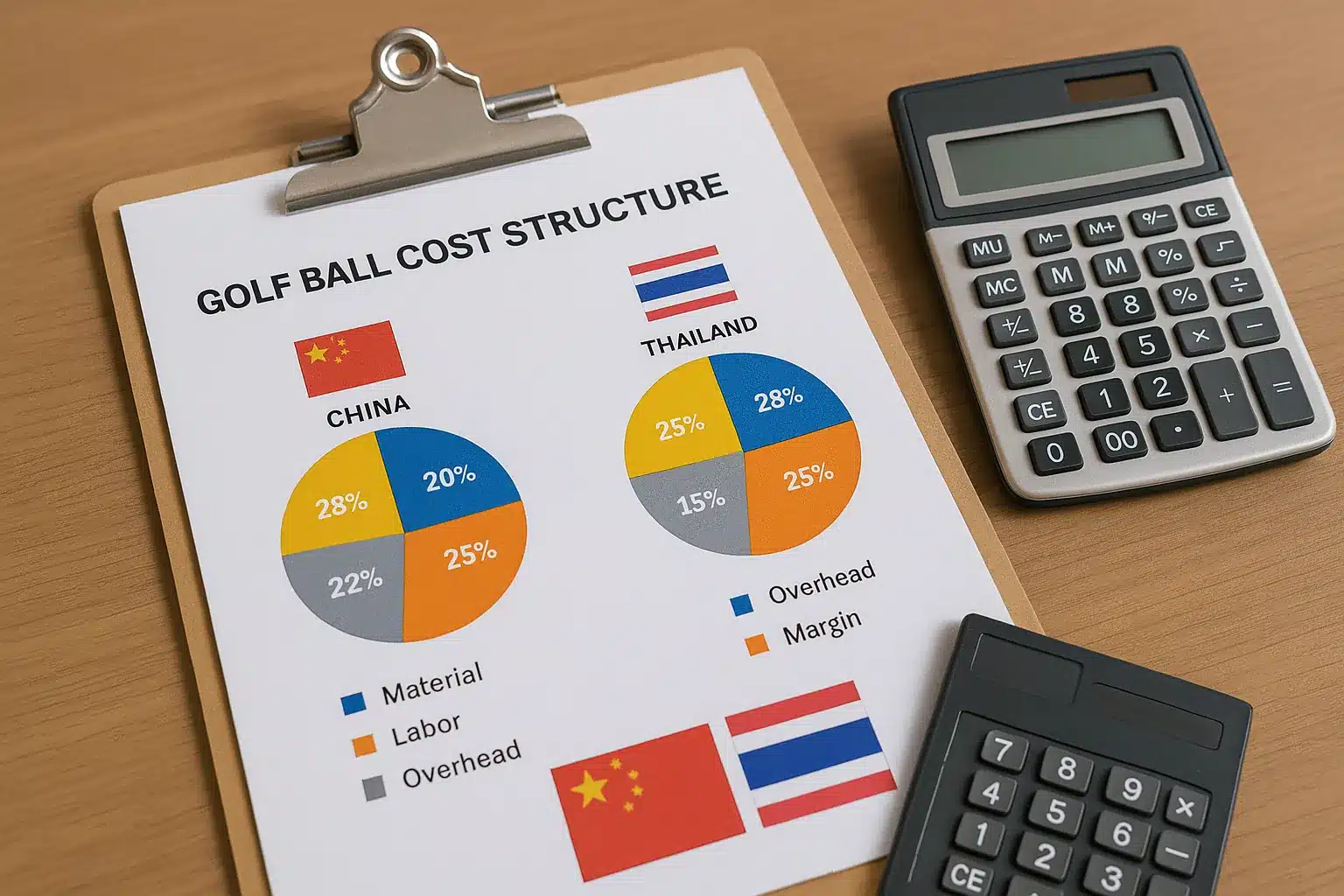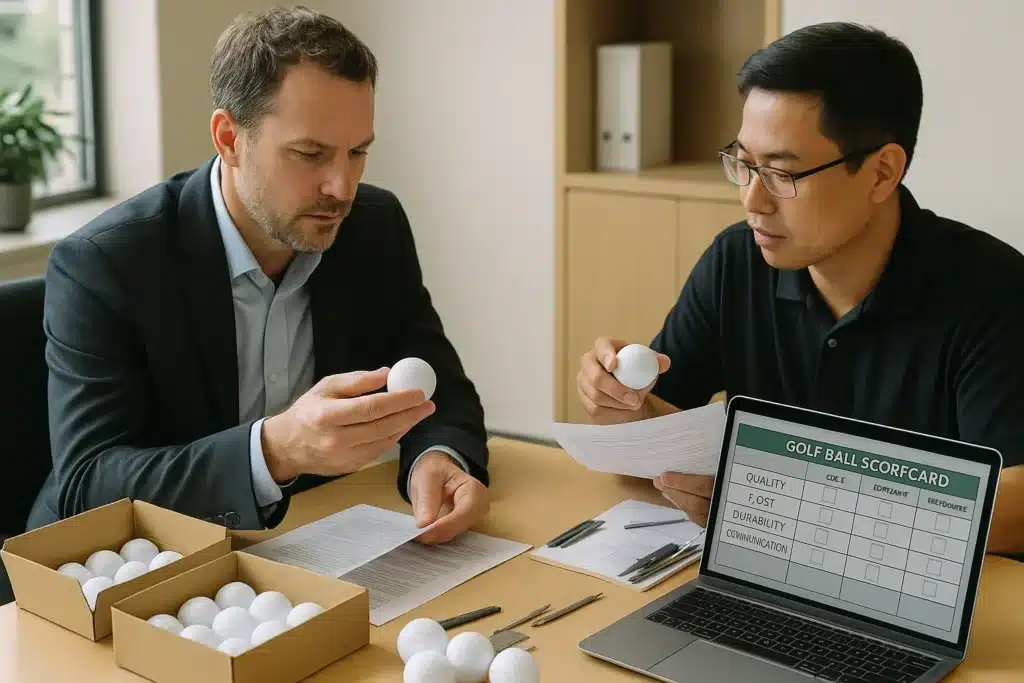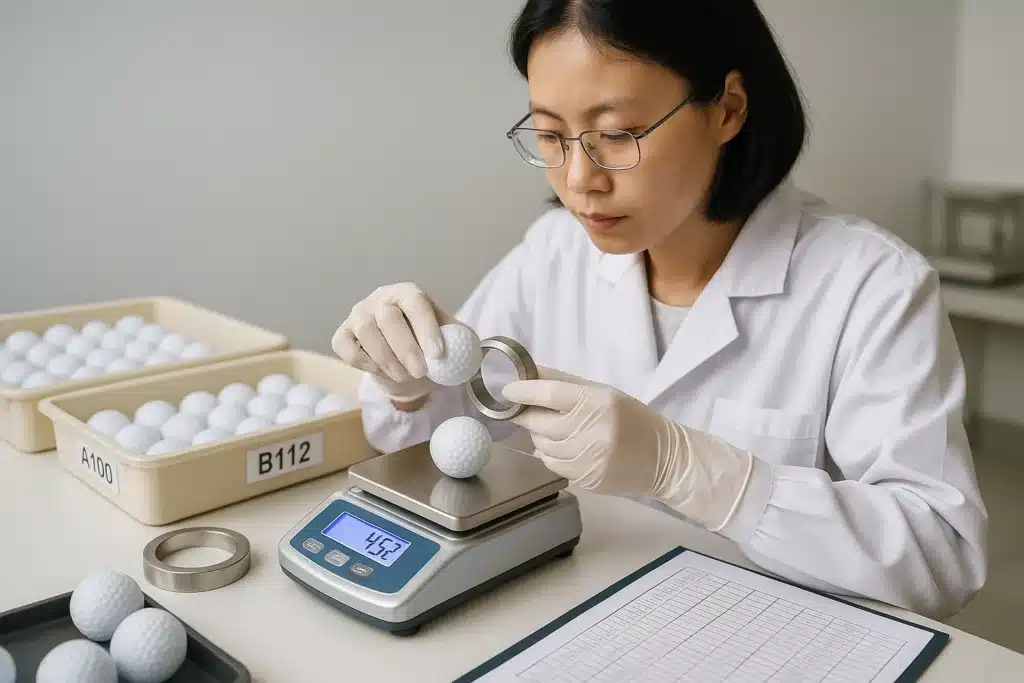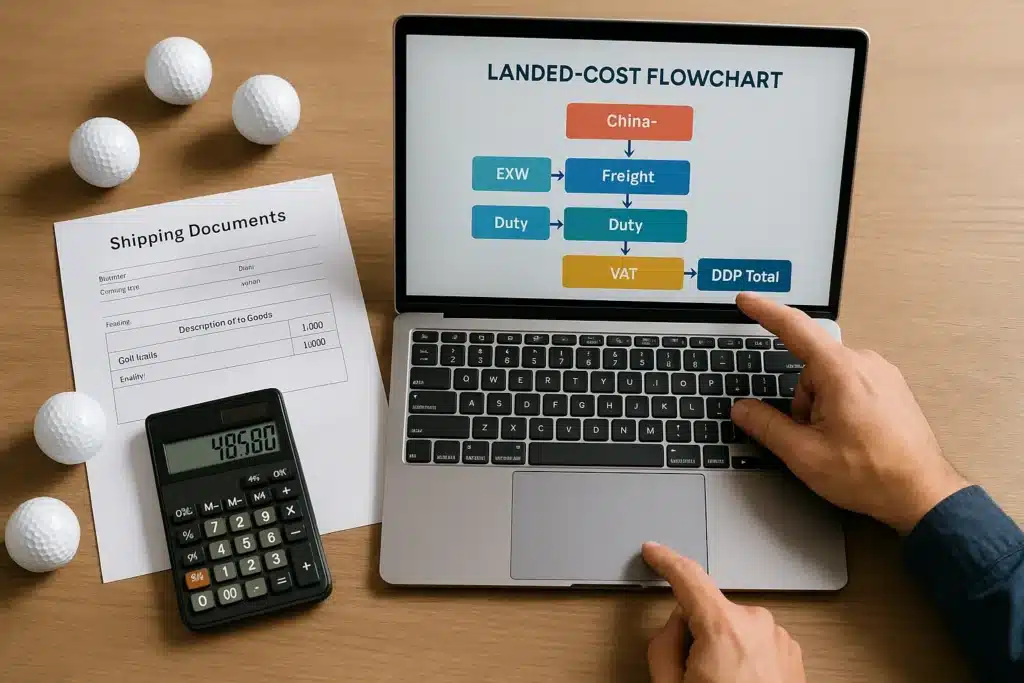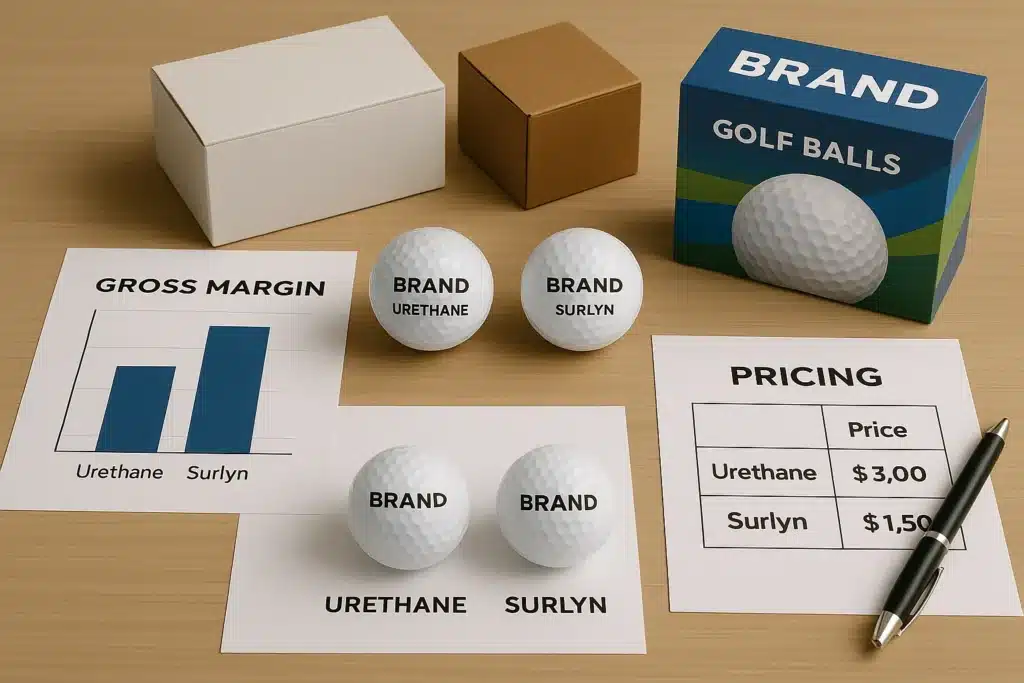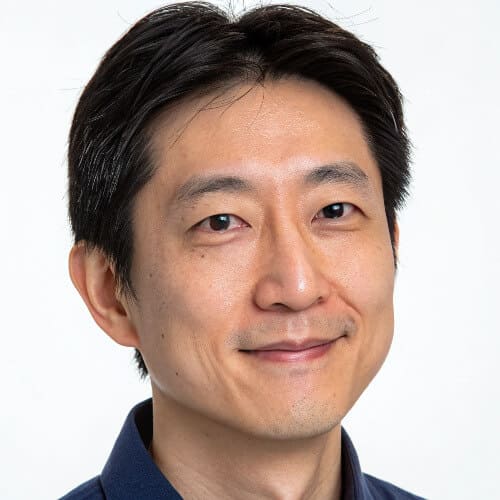China is ideal for low-MOQ OEM golf ball sourcing due to its flexible supply chain and cost efficiency, while Thailand offers premium tour-grade production for brand-affiliated buyers. Startups prefer China for private label flexibility, whereas Thailand excels in urethane precision and consistency. Choosing between them depends on your SKU strategy, customization needs, and entry barriers.
What is the sourcing role of China vs Thailand in the golf ball industry?
China leads in volume and OEM customization; Thailand specializes in premium tour-level balls.
Why is China dominant in mass-market golf balls?
China’s factories serve practice ranges, promotions, and bulk OEM orders.
Cities like Ningbo and Dongguan produce Surlyn and TPU golf balls in high volume. They support fast turnarounds and low MOQs, ideal for distributors and startups looking for a golf ball manufacturer in China with private-label services.
What does Thailand focus on in golf ball production?
Thailand’s edge is in high-end urethane multilayer balls.
Rayong hosts Titleist’s Ball Plant 4, supplying Pro V1 and tour lines to Asia and Europe. Thai factories maintain strict QC to ensure consistent spin and feel, positioning themselves as a premium OEM vs ODM golf balls hub for brand-affiliated buyers.
How do material supply chains differ between China and Thailand?
Thailand blends natural rubber and petrochemicals; China leads in synthetic polymer diversity.
How does Thailand source golf ball materials?
Thailand leverages its rubber and petrochemical base.
Factories near Map Ta Phut source from Dow, PTTGC, and local rubber farms. This synergy supports urethane cover casting and BR core production.
What materials give China an edge in flexibility?
China controls full-spectrum synthetic input: Surlyn, TPU, BR, SSBR.
Sinopec and domestic producers ensure steady polymer supply. Imported Surlyn is common, while local TPU cuts cost for mid-range balls.
✔ True — What "golf ball material sourcing" really means
Material sourcing covers more than rubber. It includes Surlyn, dimple molds, pigments, curing agents, and tooling. China offers full-scope sourcing; Thailand leads in rubber-polymer synergy.
✘ False — "Same raw material means same ball quality"
Even with similar inputs, production quality depends on process control, tooling, and QC. Identical Surlyn doesn’t mean identical performance.
How do China and Thailand compare in golf ball manufacturing capabilities?
Thailand prioritizes consistency and premium QC; China delivers adaptable OEM at scale.
What is Thailand’s strength in manufacturing?
Tour-level consistency with urethane casting.
Thailand excels in 3- to 4-piece urethane balls with precise curing and testing. Output suits global tour standards, though most factories are tied to in-house brands.
Why is China preferred for private-label golf balls?
OEM-friendly, multi-SKU support with fast sample runs.
Chinese suppliers handle Surlyn, TPU, and urethane models. They support custom dimple molds, various compressions, and branding, with MOQs starting at 600 pcs. Many startups rely on custom golf balls for startups produced in China.
What are the cost advantages of sourcing from China or Thailand?
China offers lower wages and VAT rebates; Thailand incentivizes via EEC tax perks.
What cost structures apply in Thailand?
Premium cost with long-term tax advantages.
Thailand’s wages start around 400 THB/day. Electricity is variable. Eastern Economic Corridor (EEC) offers tax breaks, tariff waivers, and capped 17% expat tax.
How does China reduce sourcing costs?
Lower labor, efficient power, and 13% VAT rebates.
Factory wages start from RMB 2,690 in Tier 1 cities. Electricity averages RMB 0.63/kWh. Export rebates improve margins for bulk OEM buyers, especially those testing golf ball supplier minimum order strategies.
Which country offers more OEM flexibility for golf ball buyers?
China welcomes new brands with low MOQs and high customization.
Is OEM sourcing harder in Thailand?
Yes, unless you’re a licensed brand distributor.
Thai OEMs usually serve long-term brand partners. Small or new entrants face entry barriers unless linked to existing brand ecosystems.
Why do buyers prefer China for OEM golf balls?
Open ecosystem, fast prototyping, and online sourcing access.
Platforms like Alibaba and Made-in-China connect buyers to factories offering 600-piece orders, custom dimple molds, and private-label branding.
✔ True — What “OEM flexibility” really means
OEM flexibility includes MOQ, tooling, printing, and packaging. China offers die setup and short-run branding with minimal lead time.
✘ False — "Thailand can’t do OEM at all"
Thailand can support OEM, but it’s limited to brand-approved or licensed partners. Entry is restricted for new or unknown buyers.
How do logistics and shipping differ between China and Thailand?
Thailand offers slightly faster sea freight to US/EU; China has more routes and options.
What are shipping timelines from each country?
Thailand to US/EU: 28–35 days; China: 30–40 days.
Thailand benefits from fewer port bottlenecks. China offers extensive port choices but can face seasonal congestion.
What about freight flexibility?
China supports hybrid freight, partial loads, and faster inland access.
For buyers needing consolidation or DDP shipping, China offers more freight forwarders and bonded warehouse options.
How do sourcing risks compare?
China faces volume pressures and trade scrutiny; Thailand faces OEM access limits and higher costs.
What risks affect sourcing from China?
Tariff fluctuation, production overloads, and inconsistent QC.
Buyers must audit suppliers regularly and clarify specs to avoid quality drift in high-volume runs.
What risks exist in sourcing from Thailand?
Higher costs, tight OEM access, and fewer supplier options.
While quality is high, limited factory options make backup sourcing harder. Entry-level buyers may get deprioritized.
✔ True — What MOQ really reflects in manufacturing
MOQ (Minimum Order Quantity) is based on raw material batches, machine setup cost, and packaging runs. Negotiating it requires trade-offs in price, timing, or customization.
✘ False — "MOQ is just supplier being lazy or rigid"
Thinking MOQ is just a made-up number can lead to friction. It’s tied to real production logic — understanding this helps you get flexibility the right way.
Which supplier is better for small MOQs?
China is the clear choice for MOQ-sensitive buyers.
Buyers can start from 600 pcs, test packaging, or trial a new SKU with minimal financial exposure. Thailand rarely supports orders this small, making it less accessible for new entrants.
When should I consider dual sourcing?
Dual sourcing works best when balancing bulk volume with prestige branding.
Many distributors rely on China for high-volume Surlyn balls and Thailand for urethane models. This reduces tariff exposure, ensures supply chain resilience, and creates a multi-tier SKU strategy.
What are examples of successful hybrid sourcing?
A mid-size EU distributor cut costs by 22% using China + Thailand dual sourcing.
They sourced Surlyn logo balls from Dongguan for promotions, while Thailand supplied urethane models for premium retail. This split optimized both price and brand positioning.
Summary table: Comparing China vs Thailand for OEM golf balls
| Factor | China | Thailand |
|---|---|---|
| Export Volume | 286M pcs, $1.17B | Lower volume, high value |
| Core Product | Surlyn, TPU, logo OEM | Urethane, tour-grade |
| MOQ Flexibility | From 600 pcs | Limited OEM availability |
| Labor & Cost Base | Low wages, VAT rebates | Higher cost, EEC incentives |
| Freight Options | Multi-port, consolidation | Faster direct-to-US/EU |
| Buyer Fit | Startups, promos, OEM brands | Premium, brand-linked buyers |
FAQs: China vs Thailand for Golf Ball Sourcing
Which country is better for OEM golf balls?
China is best for custom orders, branding, and low MOQs. It provides full OEM/ODM flexibility, while Thailand mainly supports brand-affiliated OEMs.
Who offers better premium ball quality?
Thailand leads in tour-level quality and casting precision. Its urethane balls deliver consistent feel and spin, especially in high-performance markets.
Can I test both sources?
Yes. Many buyers combine China for bulk and Thailand for premium SKUs. This hybrid sourcing balances volume efficiency with brand perception, reducing dependency on a single country.
What are the lead time differences?
Thailand may ship faster (28–35 days); China averages 30–40 days. However, China offers more freight flexibility, including bonded zones and hybrid shipping options.
Is China riskier due to tariffs?
Yes, but risks can be managed. Using DDP shipping, bonded warehouses, or a China+1 sourcing strategy helps reduce tariff exposure and delivery delays.
Key takeaway and sourcing tip
China wins for scalable OEM sourcing, low MOQs, and cost. Thailand excels in urethane precision, QC, and brand prestige. Many buyers now use both to balance volume with performance.
Since 2012, Golfara has helped sourcing teams like yours balance quality, cost, and flexibility in golf ball production. Whether you’re scaling private label or exploring urethane SKUs, we can help.
You Might Also Like
Compare sourcing strengths between Japan and China for OEM golf ball production.

